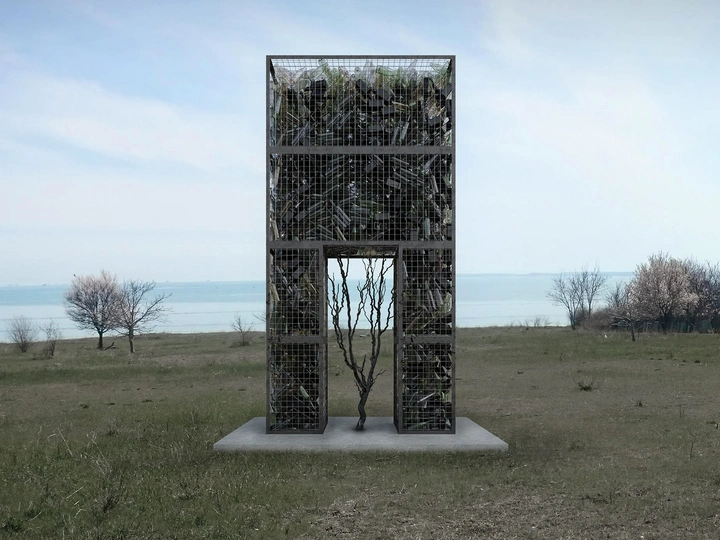Tree of life.

Anna Ostapenko
Anastasia Suvorova
In addition to interior design, I am interested in the trends of contemporary art, urbanism and urban spaces, and more specifically urban art objects
I conducted a certain amount of independent research in this area, created projects for competitions, conducted lectures and workshops on this topic.
My interiors participated in the Moldavian and Romanian Design Week.
The furniture design was at an exhibition in Geneva.
My Art Object took first place at a competition in Chisinau.
The object is a rectangular structure 4 meters high, which is significantly taller than human height.
Consists of mesh metal cells filled with glass bottles.
The most important thing is the number of bottles - more than one and a half thousand pieces
It is this amount, according to estimates, that is released along the entire bank of the Dniester River in just one day.
This is quite a significant figure; this is felt especially well if you look at this volume while standing next to the installation.
The idea for this object was born from my personal dissatisfaction with the number of cigarette butts on the sidewalks, lawns and on the city beach.
I wanted to show that the smallest actions that people usually don't even notice can lead to unpleasant consequences
And due to the cumulative effect, these consequences can be very large-scale.
Glass bottles turned out to be a more convenient material to demonstrate this effect.
Inside the arch there is a dead tree trunk as a symbol of the fact that nature will not be able to endlessly resist human activity.
But inside the structure there is access to open ground and ivy sprouts are hidden - after a while they will begin to grow and after a few years they can completely entwine the object.
A symbol of the fact that if nature is not disturbed, it will gradually take its toll.
One of the additional components of the idea is performativity - volunteers were planned to participate in the collection of bottles, thus part of the shore is cleared to create the object.
The object was not implemented
But during an information campaign and a series of public presentations, it generated heated discussions with very different reactions.
Some people liked the object and even found it beautiful, while others said “this is terrible, I don’t want to see it in public space.”
The most important thing I learned is that public discussion can be more important than the object itself.